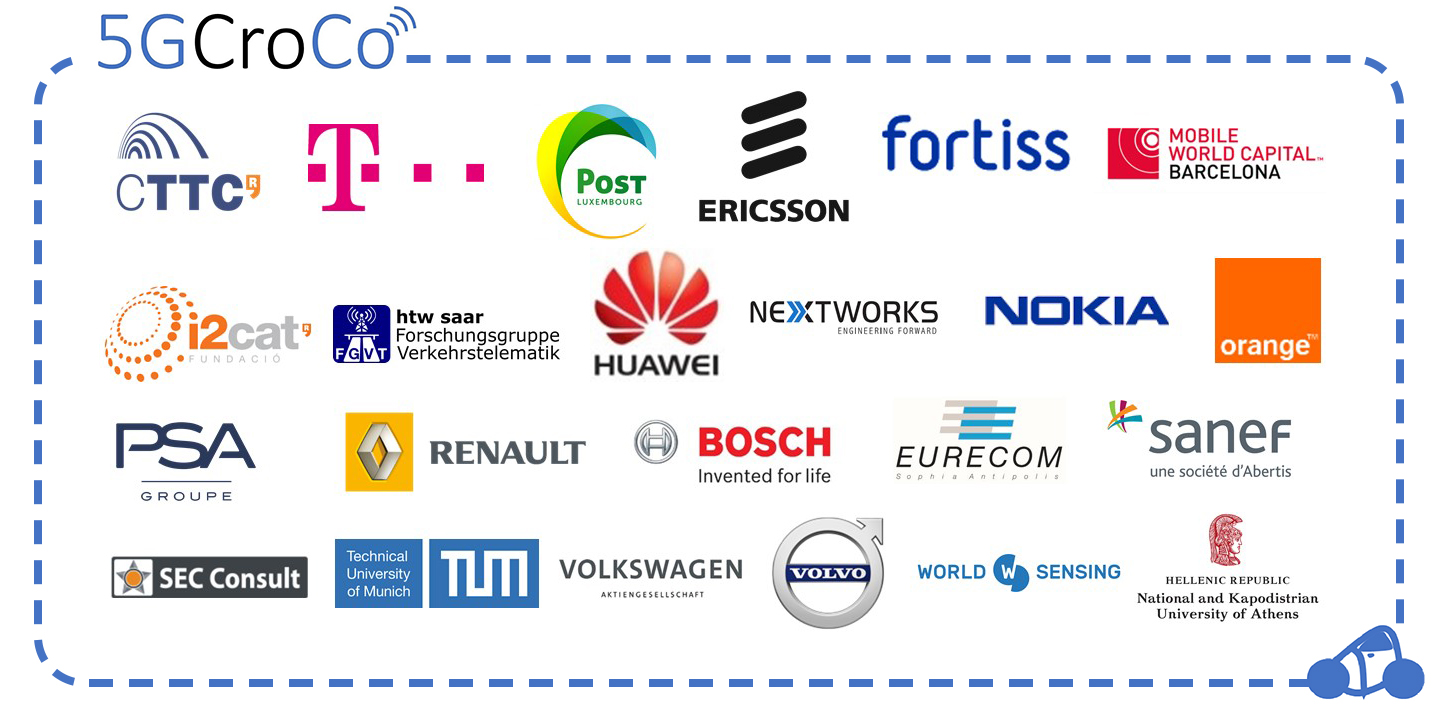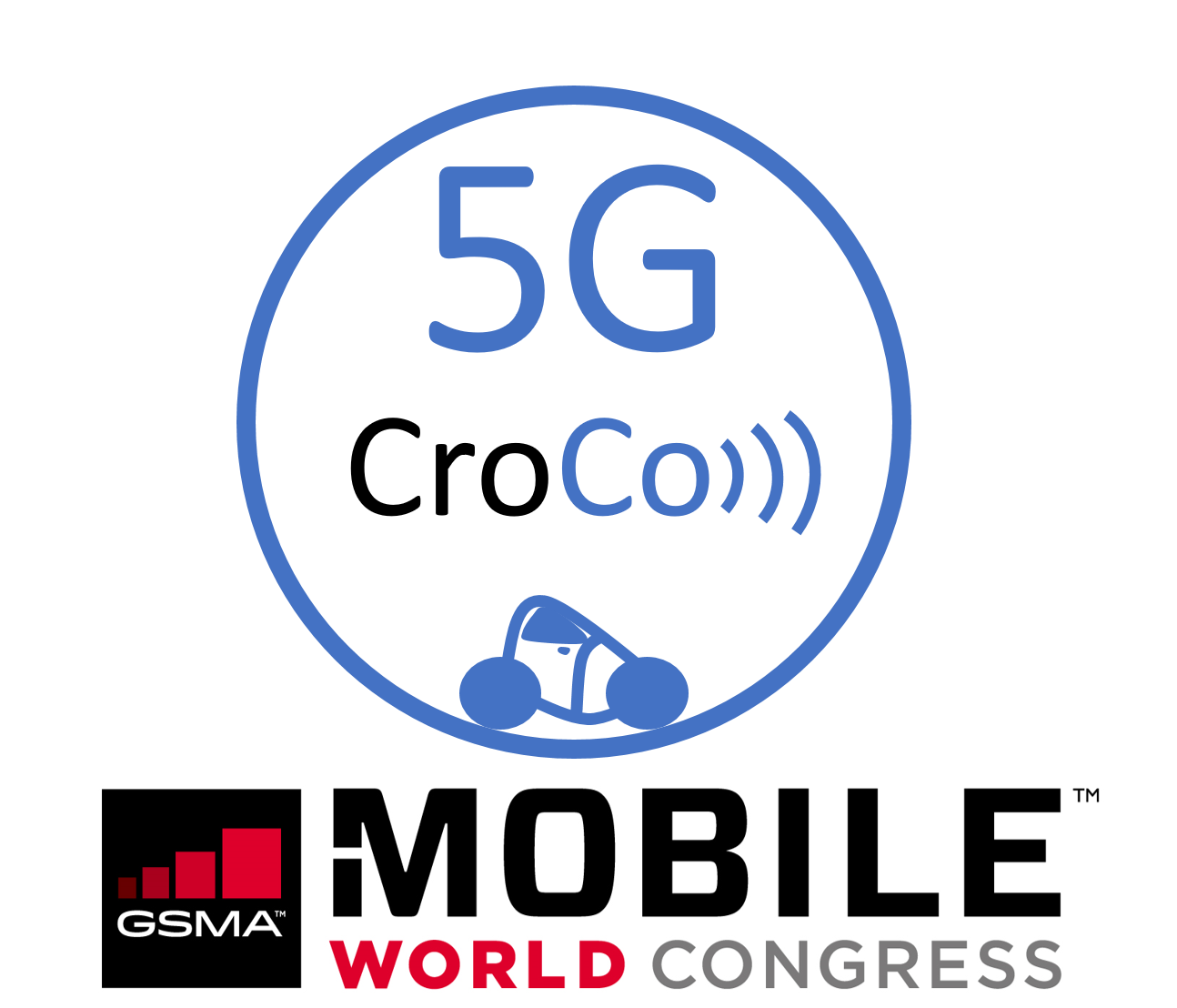El Centre Tecnològic de Telecomunicacions de Catalunya (CTTC), ubicado en Castelldefels (Barcelona), coordina el proyecto de innovación 5GCroCo. Este proyecto tiene un presupuesto de 17 millones de euros y está parcialmente financiado por la Comisión Europea en el contexto del acuerdo público-privado (PPP) para el 5G. Su principal objetivo es realizar pruebas de campo de la tecnología 5G para habilitar la conducción cooperativa, conectada y automatizada en entornos transfronterizos.
5GCroCo es el acrónimo adoptado para el proyecto de innovación con título “Control Transfronterizo para la tecnología 5G”. Se trata de un proyecto de innovación con un presupuesto total de 17 millones de euros y que inició su andadura oficialmente el pasado 1 de noviembre de 2018. 5GCroCo ha recibido cerca de 13 millones de euros de fondos de la Comisión Europea dentro del contexto de la 5G Public-Private Partnership (5G-PPP).
Su objetivo principal es desarrollar pruebas de campo de la tecnología 5G en entornos transfronterizos para habilitar la conducción cooperativa, conectada y automatizada. Las principales pruebas de campo en autopista se desplegarán en el corredor europeo 5G transfronterizo que cubre varios kilómetros de autopista conectando las ciudades de Metz en Francia, Merzig en Alemania, y Luxemburgo.
La validación de la tecnología 5G se realizará sobre 3 casos de uso: 1) conducción remota de vehículos, 2) evasión cooperativa y anticipada de colisiones, y 3) generación y distribución de mapas dinámicos de alta definición para la conducción autónoma.
El coordinador de 5GCroCo es el Centre Tecnològic de Telecomunicacions de Catalunya (CTTC, situado en Castelldefels, Barcelona). En particular, el Dr. Jesús Alonso-Zarate, responsable del Departamento de Comunicaciones de Máquina a Máquina (M2M) del CTTC, es el coordinador de 5GCroCo. El proyecto reúne a 24 socios de 7 países europeos; entre los socios se incluyen organizaciones líderes tanto del mundo de las telecomunicaciones como de la automoción. La figura adjunta muestra el listado completo de socios de 5GCroCo.
5GCroCo concentrará sus pruebas a gran escala en el corredor europeo 5G que conecta tres ciudades en Francia, Alemania y Luxemburgo, y forma parte de la red paneuropea de corredores 5G que se están estableciendo a través de una serie de acuerdos a nivel gubernamental. En virtud de estos acuerdos, se han definido cientos de kilómetros de autopistas en territorio europeo en los que será posible realizar pruebas conducción automatizada. En concreto, el acuerdo permite hacer pruebas con casos de uso de hasta nivel 3 de automatización (SAE Automated Driving Level 3), según el cual un vehículo automatizado debe operar siempre ante la presencia de un conductor.
Estos corredores 5G cuentan con el apoyo de la Comisión Europea en el marco del Plan de acción 5G. Este plan armoniza diferentes actividades y programas entre los diferentes estados miembros con el objetivo de asegurar el despliegue comercial de la tecnología 5G a finales de esta década.
Además del despliegue de la tecnología 5G a gran escala en el corredor Metz-Merzig-Luxemburgo, 5GCroCo también desplegará pilotos locales en el centro de la ciudad de Munich, en tramos de la autopista A9 en Alemania (en el demostrador 5G-ConnectedMobility), en un circuito de pruebas en Montlhéry, Francia, así como en el centro de la ciudad de Barcelona, donde se emulará un escenario de ciudad transfronteriza.
5GCroCo se centrará en validar la tecnología 5G en escenarios transfronterizos para la movilidad conectada y automatizada, teniendo en cuenta la necesidad de interoperabilidad entre fabricantes de automóviles y proveedores de primer nivel, así como entre operadores de comunicaciones móviles en diferentes países, usando equipos de comunicación de diferentes fabricantes. El enfoque técnico respecto a la validación de tecnología 5G en 5GCroCo se centra en validar el concepto Mobile Edge Computing (MEC), la computación distribuida habilitada por MEC, la nueva interfaz radio de 5G, la calidad de servicio (QoS) predictiva de extremo a extremo para garantizar la conectividad ininterrumpida con los criterios de calidad y fiabilidad exigidos, así como el posicionamiento preciso de vehículos y objetos vulnerables (obstáculos, personas, ciclistas, animales, etc.).
Además de la componente meramente técnica de validación de la tecnología 5G, el proyecto 5GCroCo también explorará modelos de negocios innovadores y elaborará recomendaciones para los organismos de regulación y de gestión del espectro radioeléctrico. El objetivo final es contribuir a garantizar el éxito de la tecnología 5G como habilitador de la movilidad cooperativa, conectada y automatizada no solo en Europa, sino en el mundo entero. En este sentido, 5GCroCo contribuirá a los estándares relevantes tanto relativos a la industria de las telecomunicaciones como a la automotriz (3GPP, ISO, etc.).
En definitiva, 5GCroCo va a contribuir a la consolidación del liderazgo de Europa en el despliegue de la tecnología 5G. Las actividades y los resultados de 5GCroCo van a contribuir a ofrecer a la sociedad en su conjunto nuevas manera de concebir la movilidad entre países mediante el uso de vehículos terrestres que serán capaces de hablar entre ellos, cooperar, y funcionar con un elevado grado de automatización.
Para conocer más detalles y estar al día de los progresos del proyecto y las pruebas previstas, se puede visitar la página web de 5GCroCo en http://www.5gcroco.eu.
Contacto
Para cualquier pregunta relacionada con 5GCroCo, comuníquese con el coordinador del proyecto:
Dr. Jesus Alonso-Zarate,
CTTC, Castelldefels, Barcelona, Spain
Email: jesus.alonso@cttc.es
Enlaces de interés







